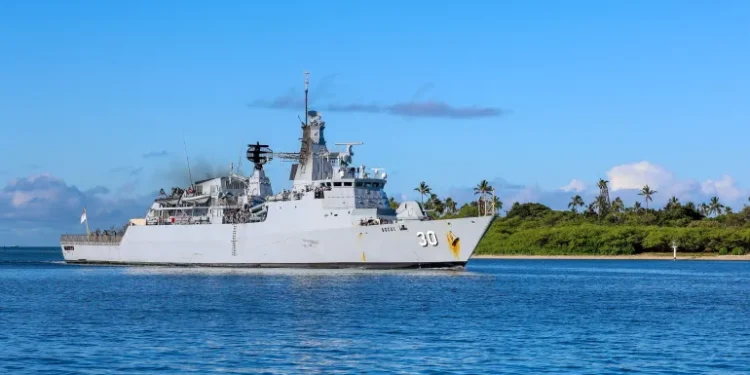The US Pacific Fleet is hosting Rim of the Pacific (RIMPAC) 2024, the world’s largest international maritime exercise, amid increasing tensions between China, the United States, and its allies. Held biennially, this year’s RIMPAC, starting June 27 and running until August, involves over 25,000 personnel from 29 countries, including South Korea, Japan, India, and several nations from Southeast Asia, South Asia, Latin America, and Europe.
The exercise aims to enhance multilateral relations and readiness for diverse operations, promoting a “free and open Indo-Pacific.” Established in 1971 by Australia, Canada, and the US, RIMPAC has evolved into a comprehensive training event involving land, air, and sea combat, amphibious landings, urban combat, anti-submarine warfare, and cyber and space operations. This year, participants will operate 150 aircraft, 40 surface ships, and three submarines.
One notable participant is Israel, joining RIMPAC for the third time. This has sparked protests from pro-Palestinian groups due to Israel’s military actions in Gaza, which have resulted in significant casualties. Despite the controversy, Israel’s participation is limited to personnel, with no aircraft or ships involved.
RIMPAC 2024 emphasizes complex tactical training, humanitarian and disaster relief operations, and integrated multi-domain warfare. These drills occur against a backdrop of heightened regional tension. The US has bolstered its military presence and alliances in the Asia Pacific, while China has increased military activities around Taiwan and clashed with the Philippines over disputed territories in the South China Sea. Russia has also intensified its regional activities, with President Vladimir Putin recently visiting China, North Korea, and Vietnam to strengthen ties and secure support for Russia’s actions in Ukraine.
Ahead of RIMPAC, the US conducted strategic bombing drills, deployed a nuclear-powered aircraft carrier to the Korean Peninsula, and engaged in military exercises with allies around Taiwan and the South China Sea. US Ambassador to China Nicholas Burns highlighted the strategic competition between the US and China in the Indo-Pacific, emphasizing the region’s importance.
David Santoro, president and CEO of the Pacific Forum, noted a shift in global security dynamics, with increasing tensions reminiscent of the Cold War era. He stressed the need for public understanding of the emerging security challenges in the Indo-Pacific and the broader world. Santoro observed that the world is moving away from collective security toward hard security priorities and bloc politics.
China, which participated in RIMPAC in 2014 and 2016, was not invited this year due to rising regional tensions. US Defense Secretary Lloyd Austin, speaking at the Shangri-La Dialogue summit in Singapore, emphasized the centrality of the Asia Pacific to US security strategy. He highlighted efforts to strengthen relationships with allies and partners in the region, working together to maintain a free and open Indo-Pacific. NATO Secretary-General Jens Stoltenberg echoed these sentiments, underscoring the interconnectedness of security between Europe and Asia.
This year’s RIMPAC also includes the largest-ever humanitarian aid and disaster relief training, with 2,500 participants from eight countries collaborating with organizations such as the United Nations and nonprofit groups. Training exercises will focus on mass casualty drills, crisis response capabilities for foreign disasters, and urban search and rescue operations, reflecting real-world humanitarian crises.
Despite the praise for fostering international cooperation, RIMPAC faces criticism from environmental activists, Indigenous groups, and others in the region. Critics argue that military exercises cause environmental damage and cultural disruptions. Demonstrations outside the US Pacific Fleet Commander headquarters at Pearl Harbor highlighted these concerns. In response, US Third Fleet public affairs stated that RIMPAC aims to strengthen security while being environmentally and culturally sensitive.
Kyle Kajihiro, an assistant professor of ethnic studies at the University of Hawaii, criticized the military’s environmental track record, citing numerous instances of contamination in Hawaii and the Pacific. He argued that these impacts make the land unlivable and contradict the military’s claims of environmental stewardship.
Despite these criticisms, the exercise continues with participation from various nations, including South Korea, which has one of three submarines involved in RIMPAC 2024. As tensions in the Asia Pacific region remain high, the exercises underscore the strategic importance of military preparedness and international cooperation in maintaining regional security.
















